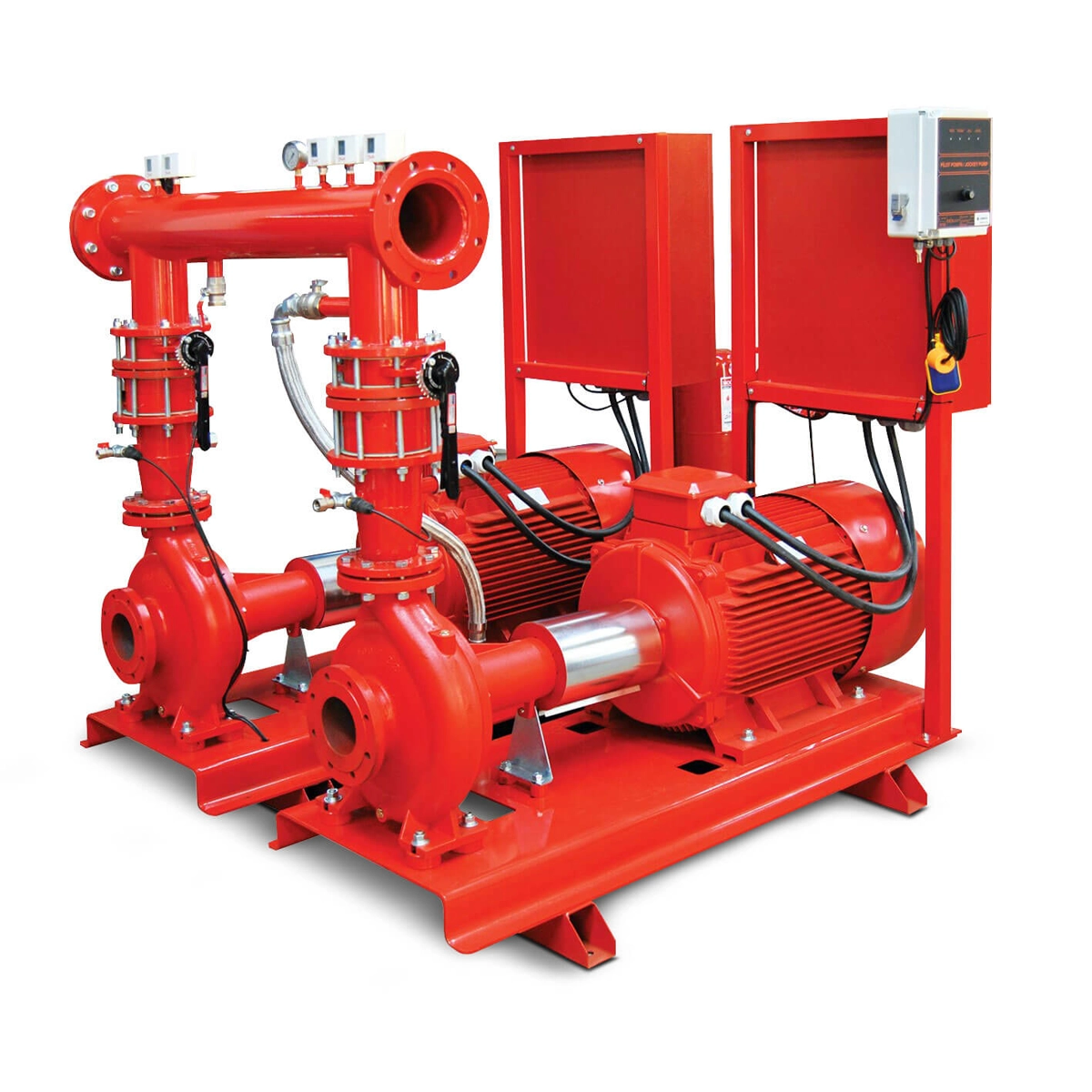Fire Pump Units





Electric Motors
Electric Motors must comply with NEMA MG-1 standards. Motors should be designed for continuous operating conditions. The service factor of the motor should not be less than 1.15 according to NEMA MG-1 standards. In areas where water splashing is possible, the motors should be of the totally enclosed type. A power supply line should be available to feed the motors, even if the electricity is cut off in the fire-secured building. If the electrical supply is unreliable, a backup source should be provided. In the case of generator-fed supply, the system should be designed according to NFPA 37 and NFPA 110 Type10 standards.
Diesel Engines
Diesel engines used in fire pumps should be reliable, high-quality, and specifically designed for fire suppression systems. They should be equipped with the necessary arrangements to operate for at least 30 minutes weekly. The engine power should be at least greater than the required maximum shaft power. When selecting engine power, necessary adjustments should be made considering conditions such as ambient temperature and altitude. The pump-engine connection should be made with a flexible coupling. The engine speed should be automatically maintained within a range that keeps the closed pressure and maximum load conditions stable. If the engine speed exceeds the rated speed, an “overspeed shutdown device” should stop the engine. A tachometer should be available to show the engine speed. An oil pressure gauge should be provided to display the engine oil pressure. A temperature gauge should be available to show the engine cooling water temperature. All engine instruments should be mounted on a properly fixed instrument panel. All cables that need to be connected to the control unit should be connected at the factory and routed to a terminal block. Starting should be done with the battery group. There should be two battery groups, primary and backup. Battery groups should be selected with twice the required power for six start attempts within 3 minutes. There should be a manual contactor that allows the voltage of both battery groups to be provided manually.
Jockey Pump
The jockey pump should have at least a 1 gpm capacity or be able to overcome an allowable leak and restore pressure to the required level within 10 minutes. It should not be at a pressure lower than the minimum pressure required for the water-based fire suppression system.
